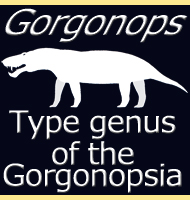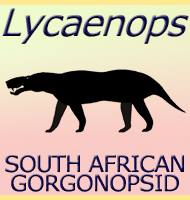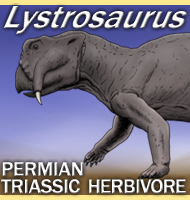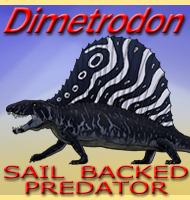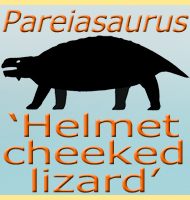


Rubidgea
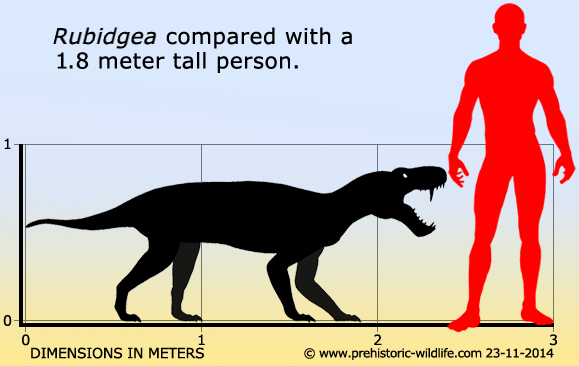
Name: Rubidgea
Phonetic: Roo-bid-gee-ah.
Named By: Robert Broom - 1948.
Synonyms: Broomicephalus, Rubidgea majora,
Rubidgea
platyrhina, Titanogorgon.
Classification: Chordata, Synapsida,
Therapsida, Gorgonopsia, Gorgonopsidae, Rubidgeinae.
Species: R. atrox (type).
Diet: Carnivore.
Size: About 2.4 meters long.
Known locations: South Africa.
Time period: Wuchiapingian of the Permian.
Fossil representation: Skulls.
Rubidgea
is a genus of gorgonopsid
that is known to have lived in South Africa
during the Wuchiapingian stage of the Permian. Gorgonopsids are noted
for having large canine teeth that projected down from the upper jaw,
but Rubidgea seems to have had particularly large
canine teeth when
compared to other gorgonopsids. These teeth were likely the primary
weapons for biting through the tough hides of prey animals to deliver
devastating bites.
In
the past Rubidgea was treated as something of a
wastebasket taxon with
numerous species assigned to the genus. Later study however has now
come to the conclusion that only the type species of Rubidgea,
R.
atrox, is valid, with other species being synonymous
with either
this type species or other genera. A PHD thesis by Gebauer in 2007
came to the opinion that the genus Tigrisaurus,
and a species of
Dinogorgon
(D. quinquemolaris) should be transferred to Rubidgea
as synonyms. However at the time of writing (2014), Dinogorgon
quinquemolaris is still commonly treated as a valid species,
while
Tigrisaurus has been reclassified as a species of Dinogorgon,
D.
pricei.
Further reading
- A contribution to our knowledge of the vertebrates of the Karroo
beds of south Africa. - Transactions of the Royal Society of
Edinburgh, v. 61, part 2, n. 21, p. 577-629. -
Robert Broom - 1948.
- Phylogeny and evolution of the Gorgonopsia with a special reference
to the skull and skeleton of GPIT/RE/7113 ('Aelurognathus?'
parringtoni) [Ph.D. thesis]. - T�bingen: Eberhard-Karls
Universit�t T�bingen. pp. 1–316. - E. V. I. Gebauer
- 2007.
----------------------------------------------------------------------------
Random favourites
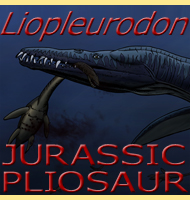 |
 |
 |
 |
